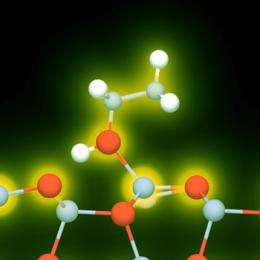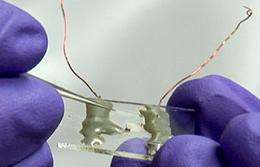Researchers develop battery-less chemical detector

(PhysOrg.com) -- Unlike many conventional chemical detectors that require an external power source, Lawrence Livermore researchers have developed a nanosensor that relies on semiconductor nanowires, rather than traditional batteries.
The device overcomes the power requirement of traditional sensors and is simple, highly sensitive and can detect various molecules quickly. Its development could be the first step in making an easily deployable chemical sensor for the battlefield.
The Lab's Yinmin "Morris" Wang and colleagues Daniel Aberg, Paul Erhart, Nipun Misra, Aleksandr Noy and Alex Hamza, along with collaborators from the University of Shanghai for Science and Technology, have fabricated the first-generation battery-less detectors that use one-dimensional semiconductor nanowires.
The nanosensors take advantage of a unique interaction between chemical species and semiconductor nanowire surfaces that stimulate an electrical charge between the two ends of nanowires or between the exposed and unexposed nanowires.
The group tested the battery-less sensors with different types of platforms - zinc-oxide and silicon -- using ethanol solvent as a testing agent.
In the zinc-oxide sensor the team found there was a change in the electric voltage between the two ends of nanowires when a small amount of ethanol was placed on the detector.
"The rise of the electric signal is almost instantaneous and decays slowly as the ethanol evaporates," Wang said.
However, when the team placed a small amount of a hexane solvent on the device, little electric voltage was seen, "indicating that the nanosensor selectively responds to different types of solvent molecules," Wang said.

The team used more than 15 different types of organic solvents and saw different voltages for each solvent. "This trait makes it possible for our nanosensors to detect different types of chemical species and their concentration levels," Wang said.
The response to different solvents was somewhat similar when the team tested the silicon nanosensors. However, the voltage decay as the solvent evaporated was drastically different from the zinc-oxide sensors. "The results indicate that it is possible to extend the battery-less sensing platform to randomly aligned semiconductor nanowire systems," Wang said.
The team's next step is to test the sensors with more complex molecules such as those from explosives and biological systems.
The research appears on the inside front cover of the Jan. 4 issue of Advanced Materials.
Provided by Lawrence Livermore National Laboratory


















